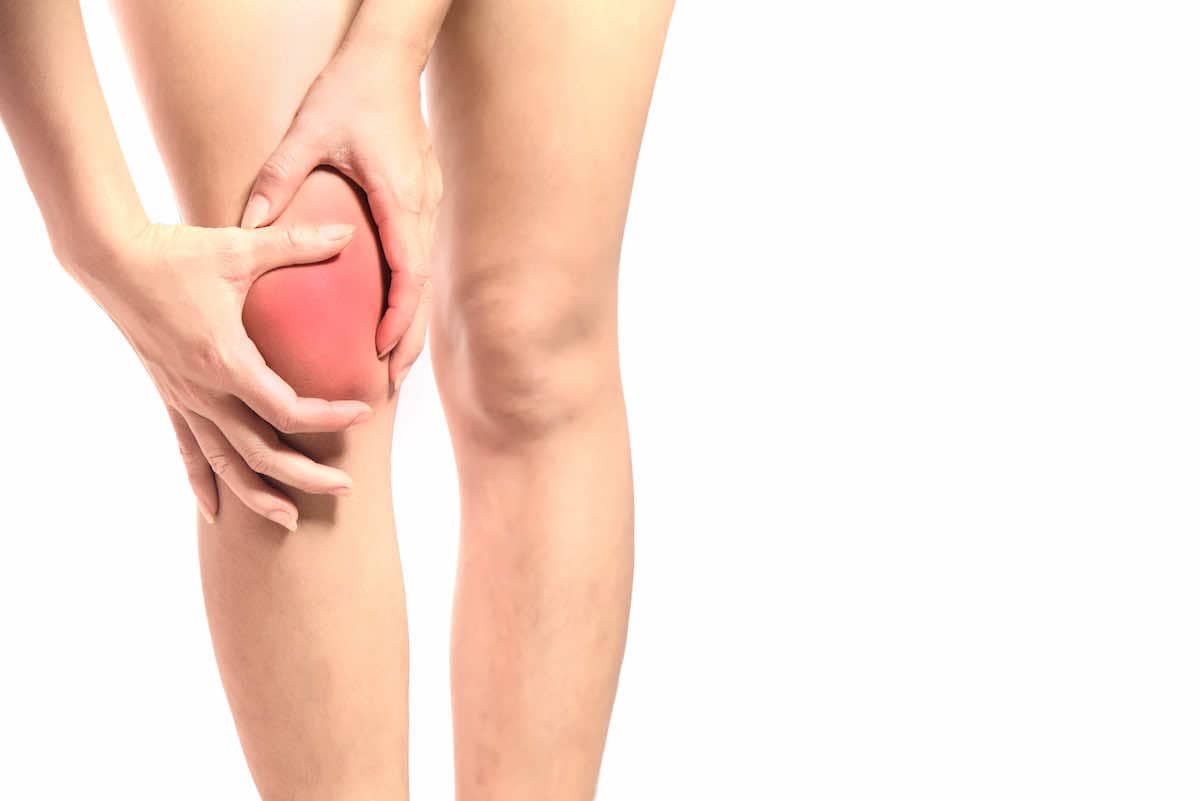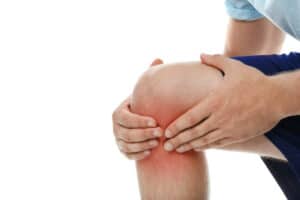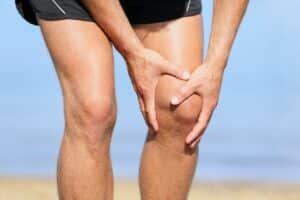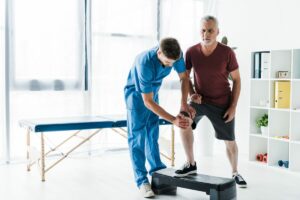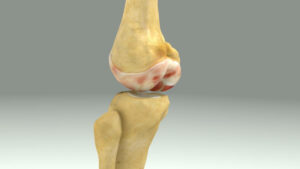Free download: Top 10 Natural & Easy Remedies for Joint Pain from Home. Learn these helpful remedies.
Estimated Reading Time: 6 minutes read
The human body is an incredibly complex and resilient system. Take the knee, for instance. This joint, small yet powerful, enables us to perform a vast array of movements, from walking to jumping, climbing stairs, or kicking a ball. Central to its function are four key ligaments, one of which is the posterior cruciate ligament (PCL). When the PCL gets injured, it can throw a spanner into the works of our daily routines.
A PCL injury occurs when the ligament, which connects the thigh bone to the shinbone at the knee, gets stretched or torn. This usually happens as a result of trauma, such as a car accident, a fall, or a sports-related impact. The severity of the injury often dictates the treatment approach, ranging from rest and physical therapy to surgical intervention in more severe cases.
Table of Contents
Recognizing a PCL Injury: Symptoms and Home Diagnosis
Recognizing a PCL injury starts with understanding its symptoms. These can include knee pain, swelling, stiffness, difficulty walking, and a wobbly sensation in the knee. You may also notice that your knee has started to give way during certain activities.
As for diagnosing a PCL injury at home, while it isn’t possible to confirm the injury without a professional medical assessment, there are a few signs that might point toward it.
A simple test you can do at home is the posterior drawer test. Sitting with your knee bent at a right angle, pull the shin back towards your body. If the shin moves backward noticeably more on one knee compared to the other, it may suggest a PCL injury. However, this test is not definitive, and you should seek professional medical advice if you suspect a PCL injury.
Exercise Regimen for PCL Injury Recovery
Once you’ve got the green light to start exercising, here are some gentle and effective exercises to consider. Remember, if you’ve undergone surgery, follow the specific protocol your surgeon or physical therapist gives.
1. Ankle Pumps
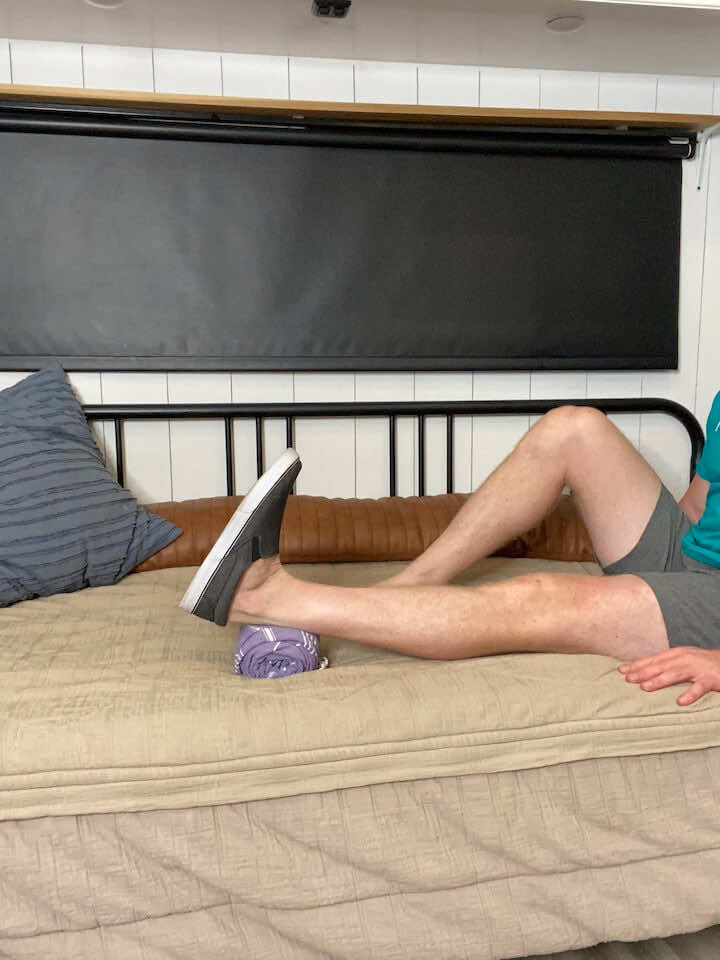
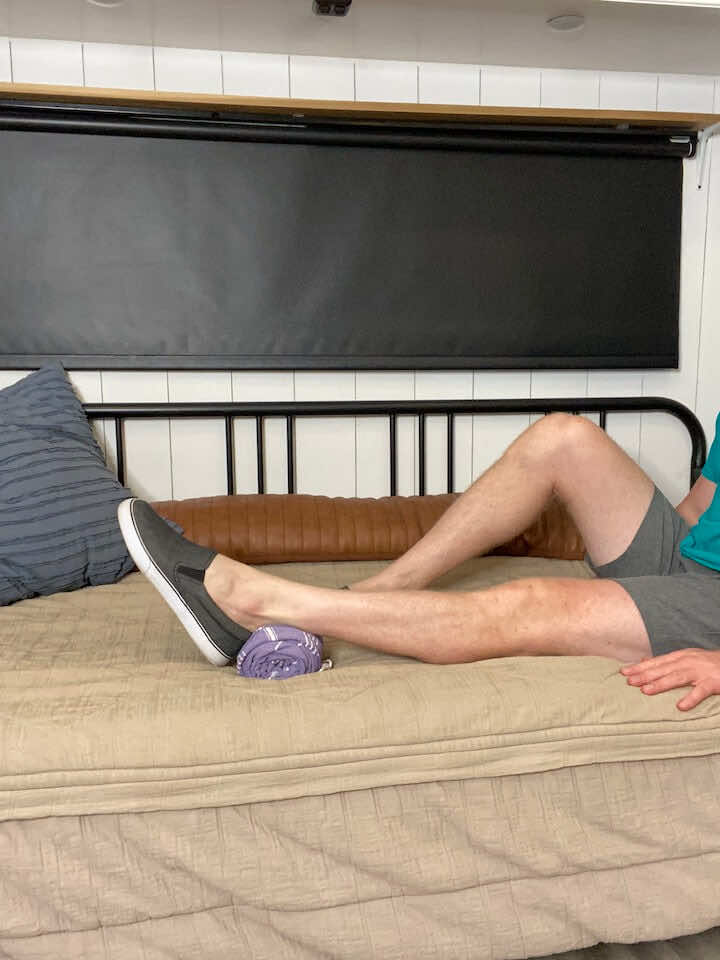
- While sitting on your bed with the injured leg straight, roll a small towel just under your calf muscle.
- Start the movement by pointing your toe forward and then pulling it back toward your nose.
- Cycle between these two positions for 10 reps and 3 sets.
2. Quad Sets
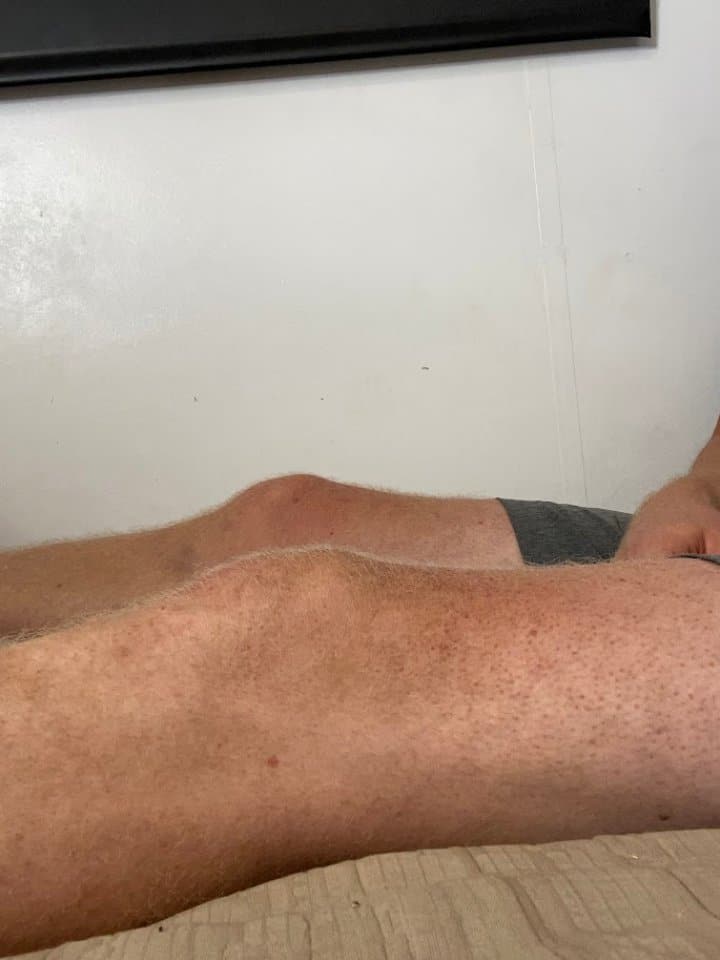
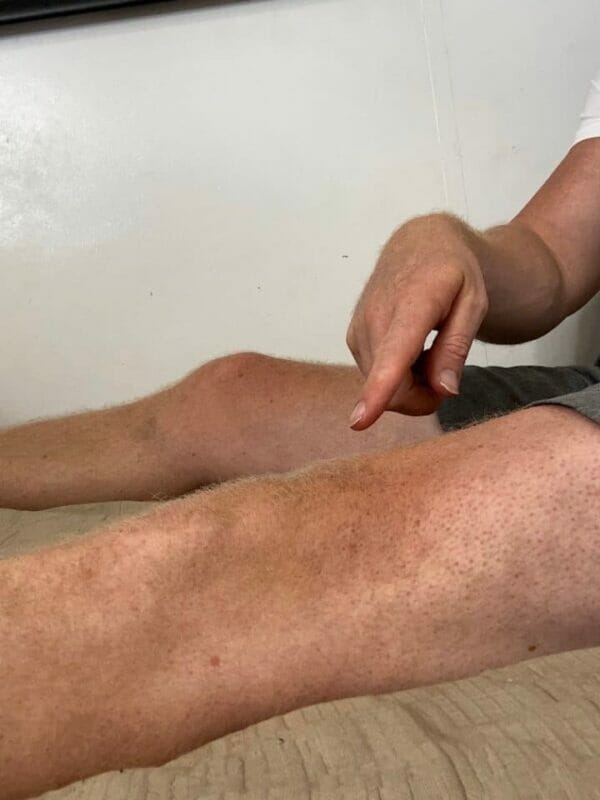
- Starting position: Seated with the injured leg stretched in front of you (can be on the floor, couch, or bed).
- Squeeze the quadriceps (the muscles on the top of the thigh) and try to press the back of the injured knee down toward the surface.
- Hold for 5 seconds, then relax.
- Repeat 10 repetitions for 3 sets.
3. Heel Slides with Rope
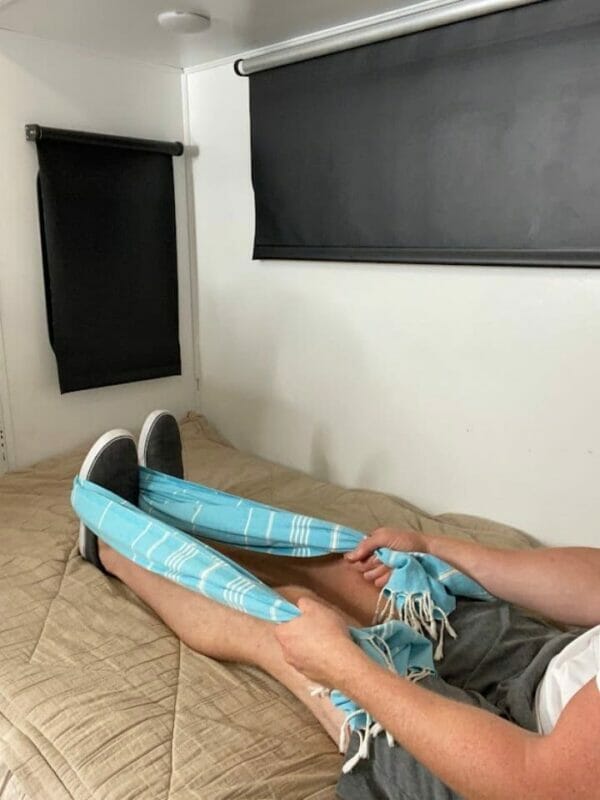
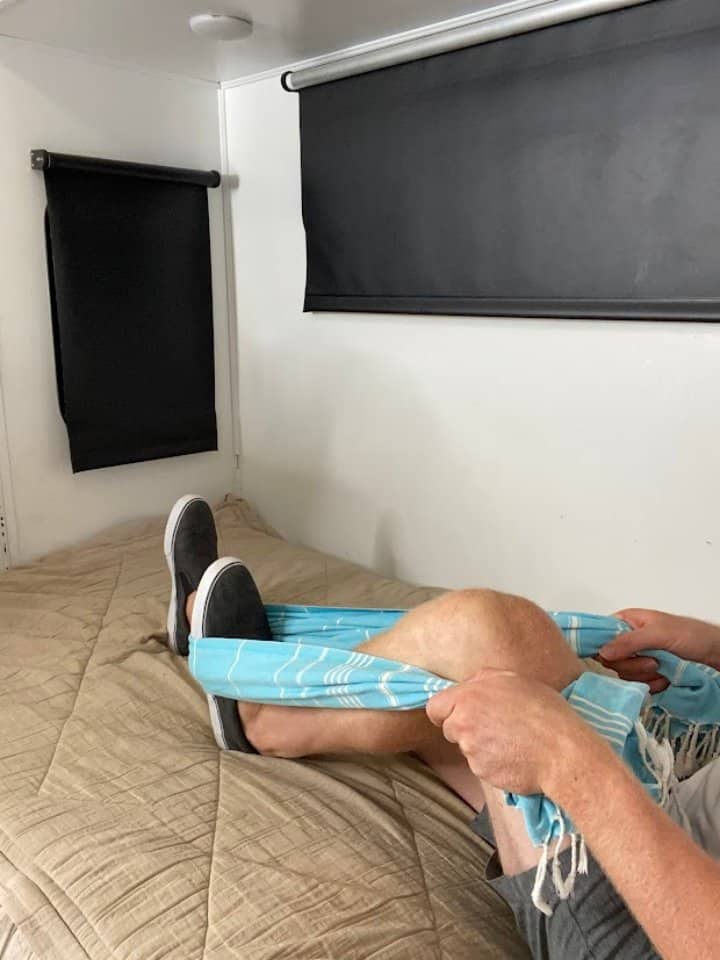
- Starting position: Sitting or laying down with the injured leg in front of you (can be on the floor, couch, or bed).
- Wrap a non-elastic strap around the foot.
- Pull on the strap with the arms to slide the heel towards the bottom while simultaneously bending the knee.
- Hold for 5 seconds, then return to your starting position.
- Repeat 10 repetitions for 3 sets.
4. Full Leg Lifts
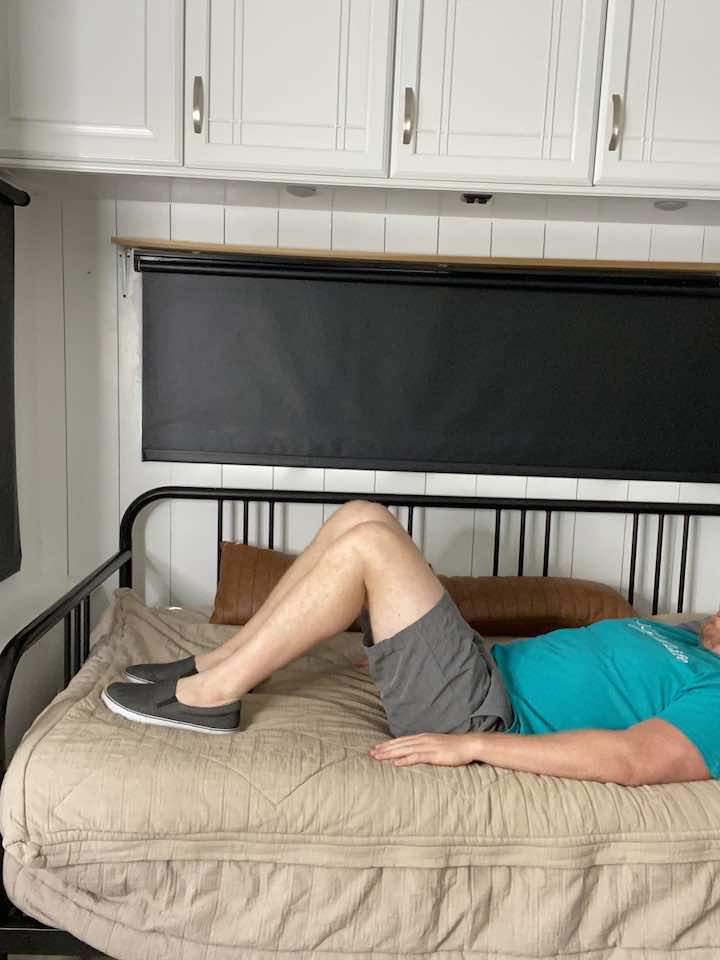
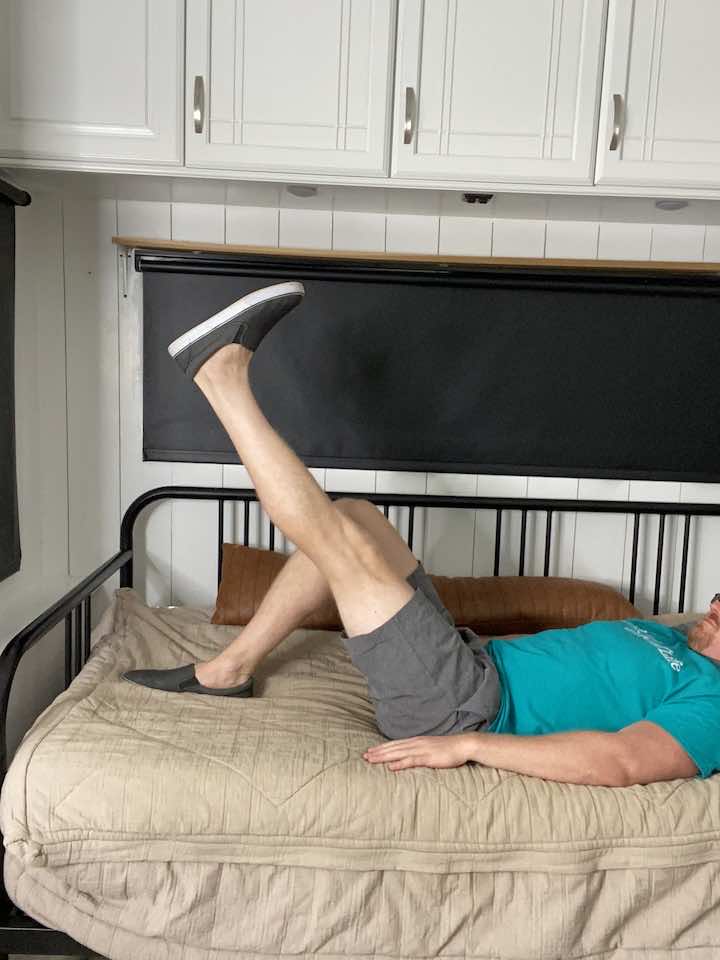
- Lie on your back with one leg bent and the other leg straight and together.
- Lift your straight leg up towards the ceiling, raising your buttocks off the floor.
- Slowly lower your leg back down, stopping just above the floor. Hold for 5 seconds briefly.
- Repeat the movement for 10 repetitions and 3 sets.
5. 3 Angle Isometric Knee Extension
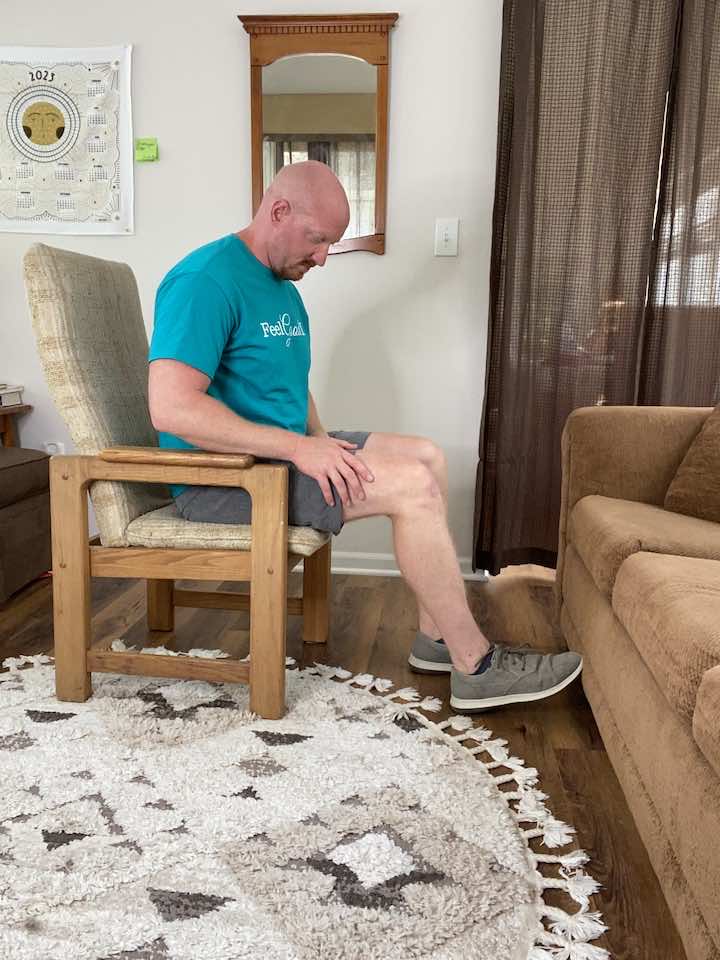
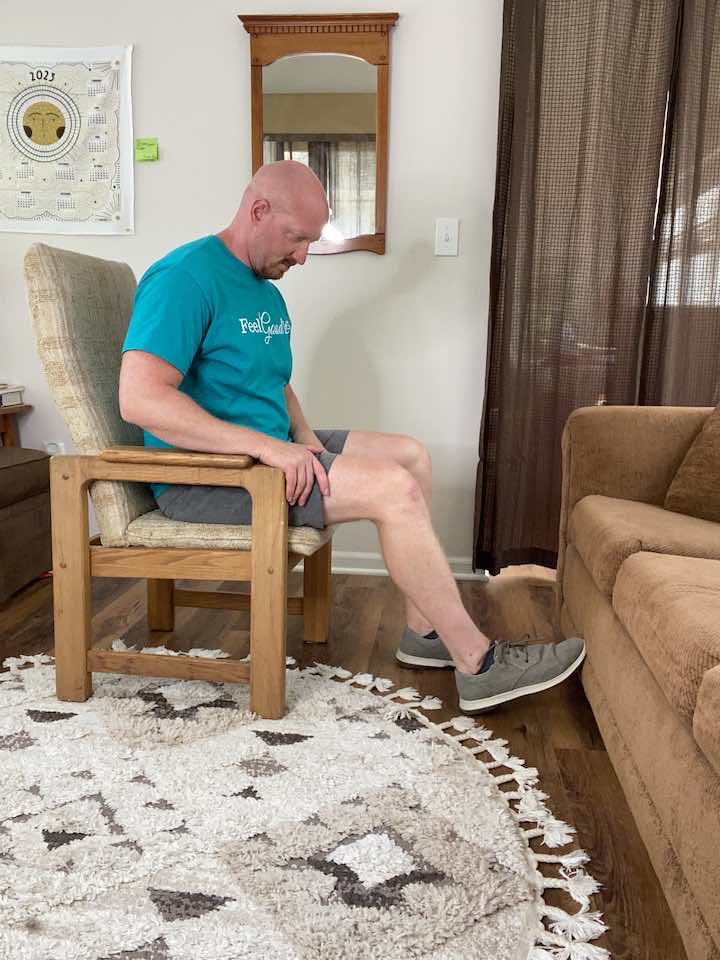
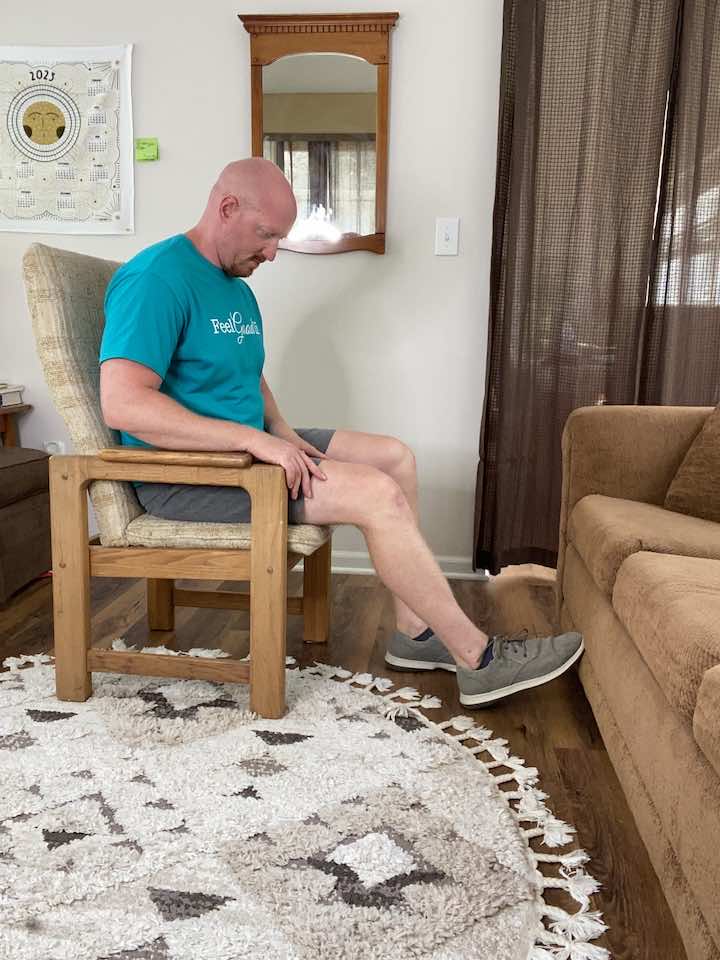
- Sit in a chair, facing a wall, and position the chair close to the wall with your knee bent at a 90-degree angle.
- Extend your leg out, pressing it firmly against the wall, and hold this position for 10 seconds.
- Slide your chair back slightly to increase the angle of your knee, and once again, extend your knee against the wall, holding for 5 seconds.
- Slide the chair back one final time to create a slightly larger angle, and repeat the knee extension for 10 repetitions, holding each repetition for 5 seconds.
6. 3 Angle Isometric Knee Flexion
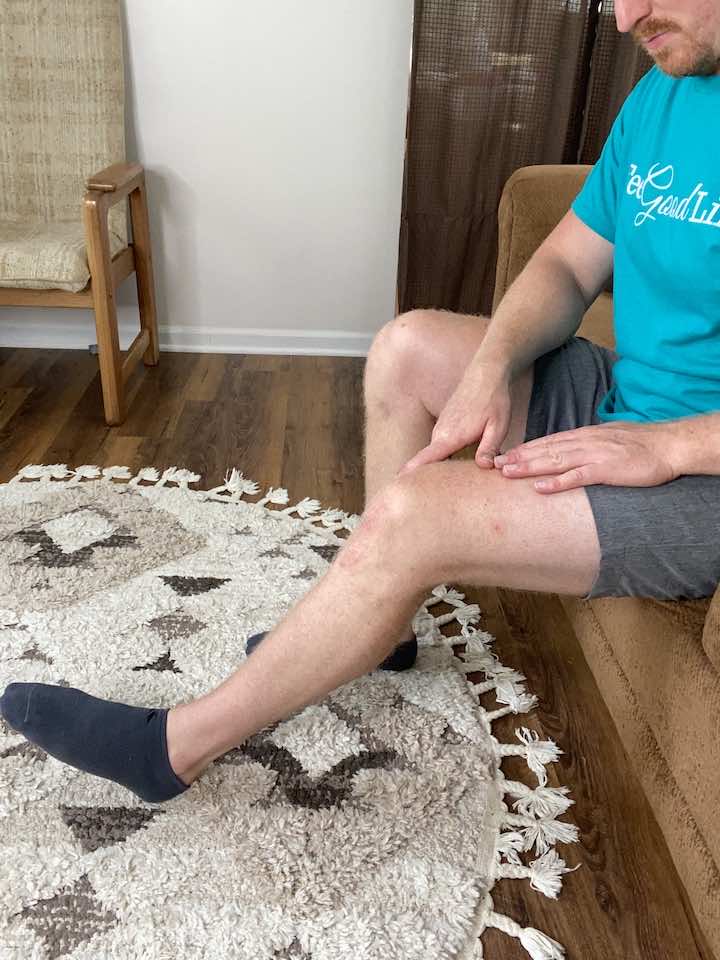
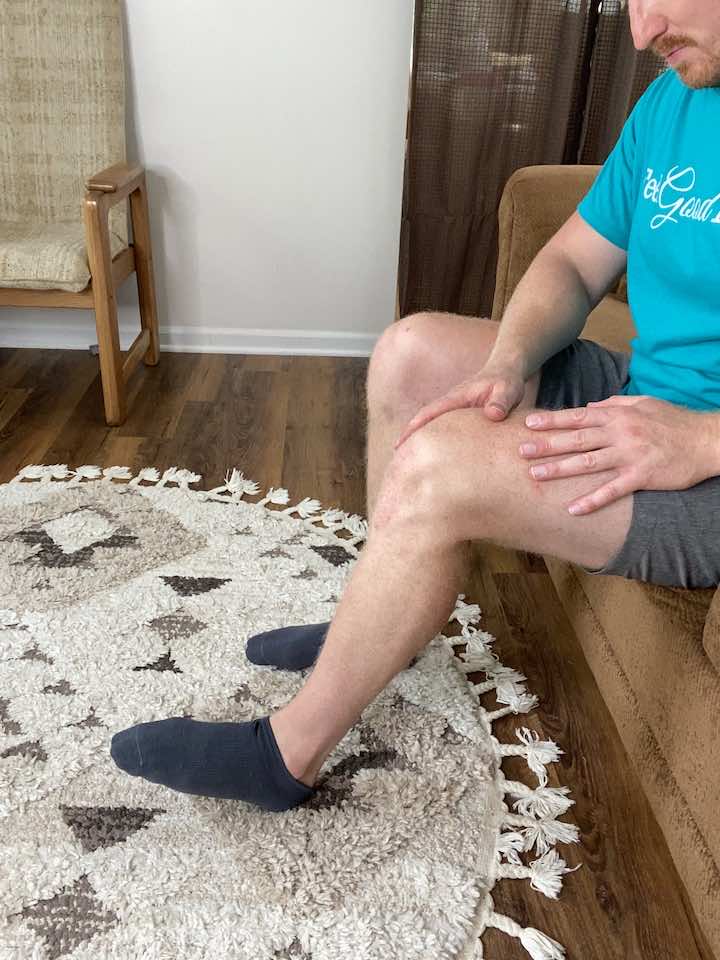
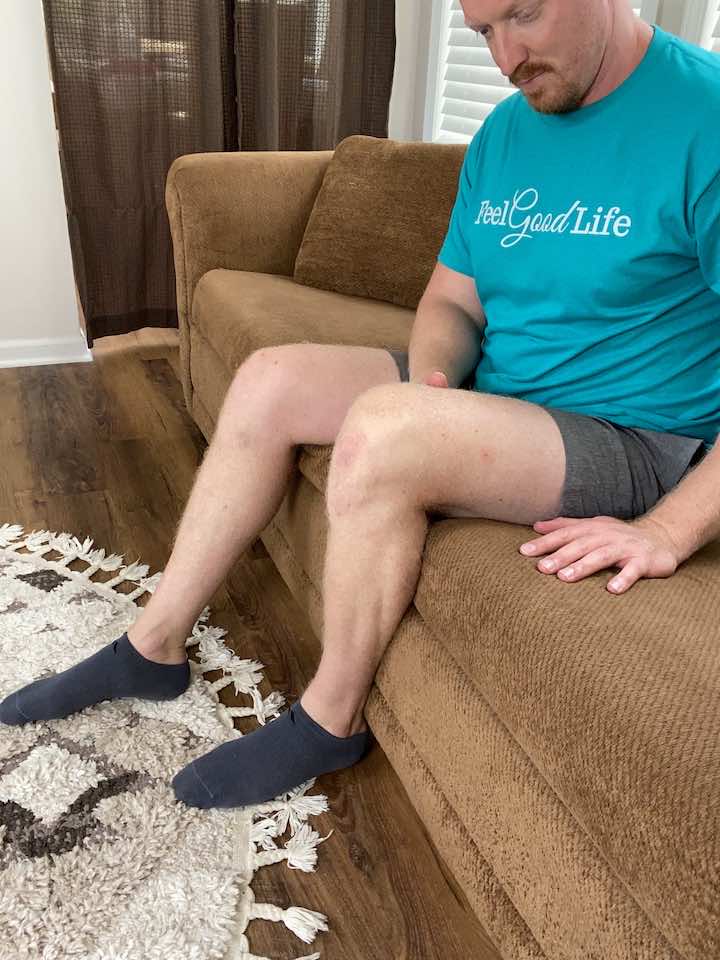
- Begin in the position where you left off during the 3-Angle Isometric Knee Extension exercise.
- Instead of using a wall, position your legs on the floor and press your heels down and backwards, engaging the muscles at the back of your leg. Hold this position for 10 seconds.
- Move your leg back towards the chair to create a new angle, and once again, press down and backwards with your heels for 10 seconds at this new angle.
- Now, bring your legs into a 90-degree angle and, for the last time, press down and backwards for 10 seconds.
- Repeat these two exercises through 3 cycles, performing 10 repetitions of 5-second holds for each angle.
7. Clamshells
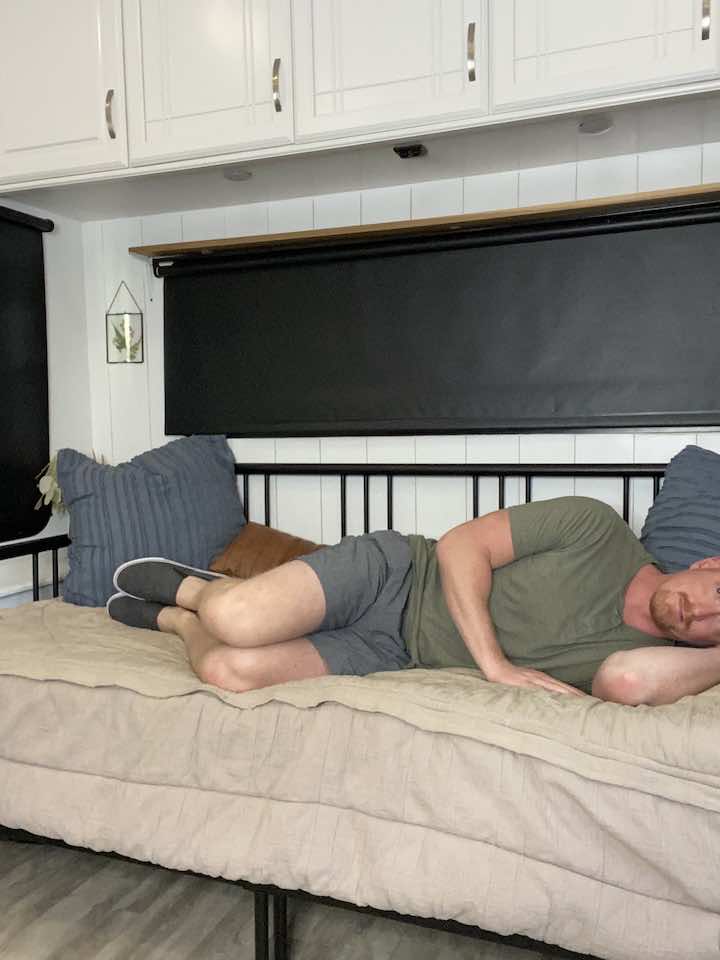
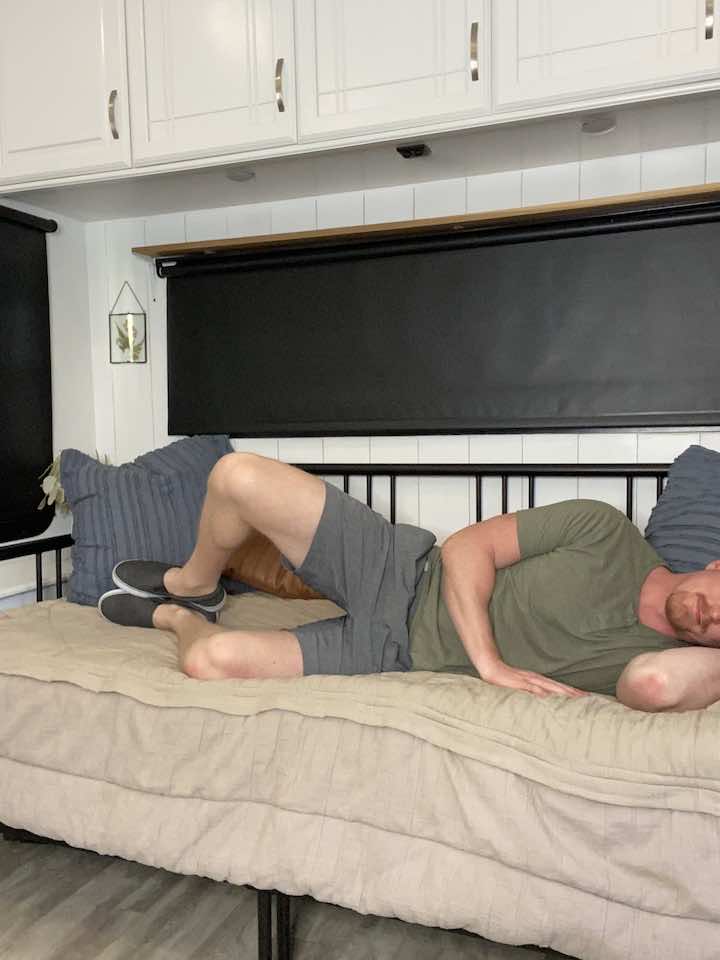
- Start by laying on your side with both knees bent.
- Keep your feet in contact with each other, and then rotate your top leg up. Ensure you keep your spine aligned and your hips don’t rock back! The rule of thumb is to do a smaller range of motion if you think your back is moving.
- Rotate your top leg back down to the starting position.
- Do this exercise 10 times in each set.
- Complete 3 sets of the exercise.
8. Standing Hip Lifts


- Stand tall with one hand placed on a bed or chair for support.
- Balance on your left leg, keeping a slight bend in your knee to avoid locking it out.
- Lead with your heel and lift your right leg out to the side, keeping your foot flexed.
- Be sure not to lean to the left while lifting your leg.
- Lower your leg back down to the starting position.
- Repeat this movement 10 times only with the injured leg.
- Do a total of 3 sets of this exercise.
9. Standing Hip Extension
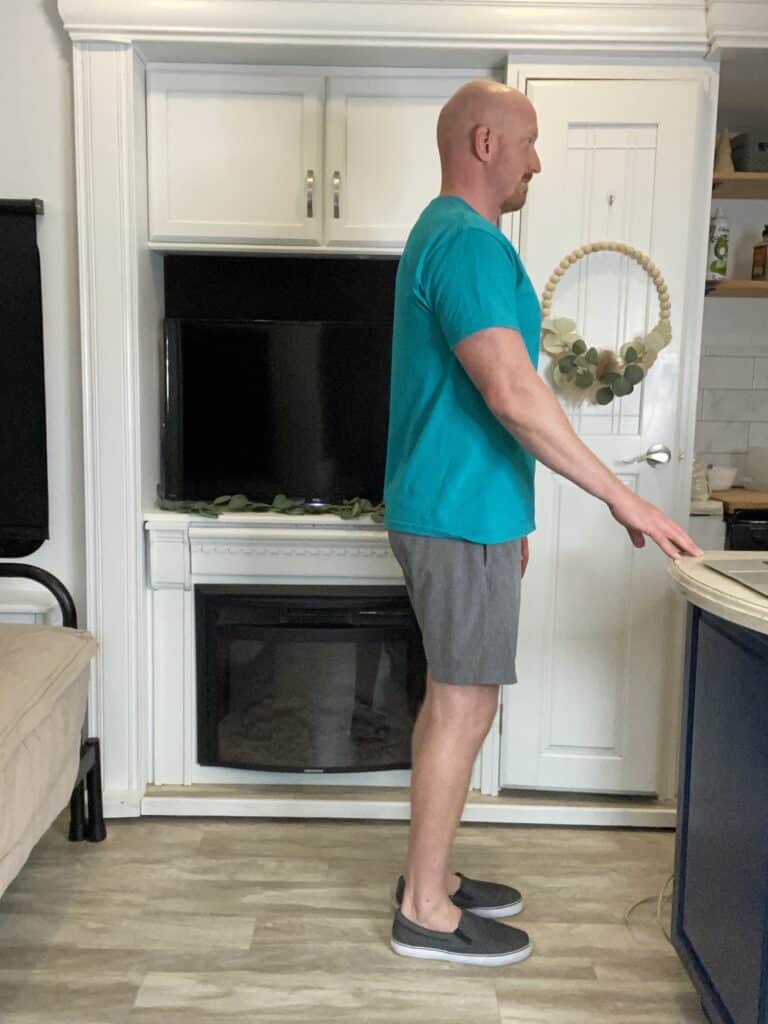
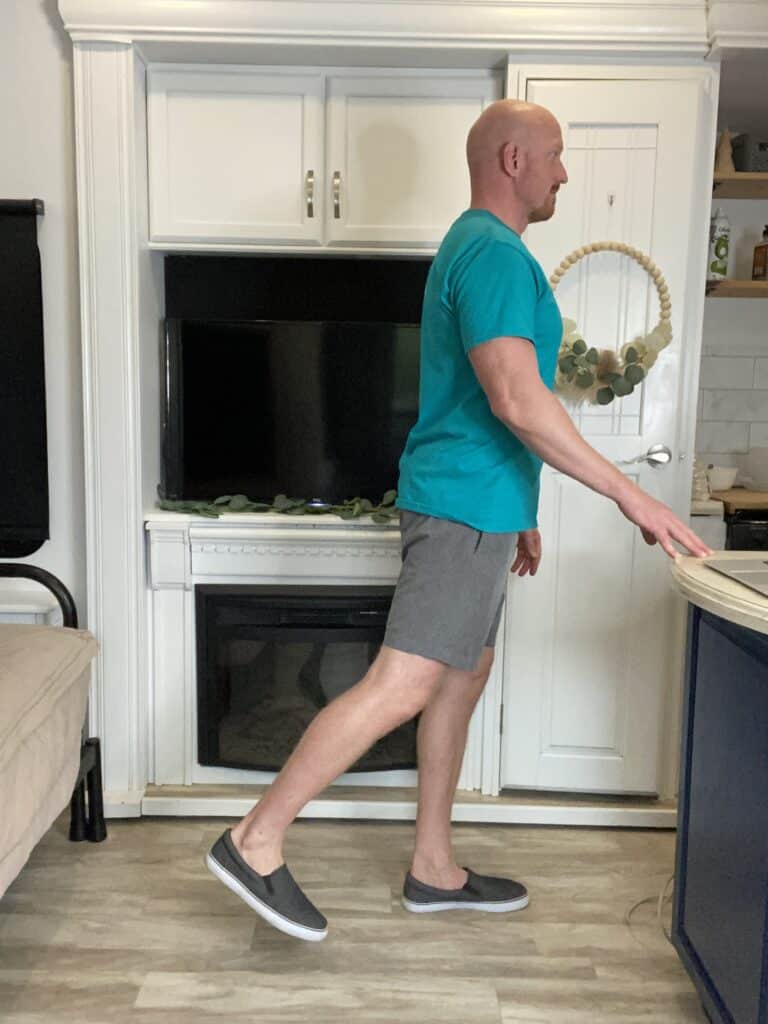
- Stand tall with your hands placed on a steady surface, such as a counter, sink, or chair (without wheels), to hold onto for balance.
- Shift your weight onto your left leg, keeping a slight bend in your left knee to avoid locking it out.
- Keeping your toes pointed forward and your right leg straight, lift your right leg back a few inches.
- Lower your leg back down to the starting position.
- Repeat this movement 10 times only with the injured leg.
- Do a total of 3 sets of this exercise.
Conclusion
When it comes to healing from a PCL injury, patience is key. These exercises aren’t a quick fix but rather a part of a long-term strategy to regain strength, mobility, and functionality in your knee. Keep in mind that the progression should be gradual, and pain should be your guide – push yourself, but not to the point of increasing pain.
Ultimately, remember that your recovery journey is personal. Just as the injury occurred under unique circumstances, your path to healing is unique to you. Be patient with your body, stay consistent with your exercises, and keep communication open with your healthcare provider. By doing so, you’ll increase your chances of making a successful, strong, and stable return to your normal activities.


